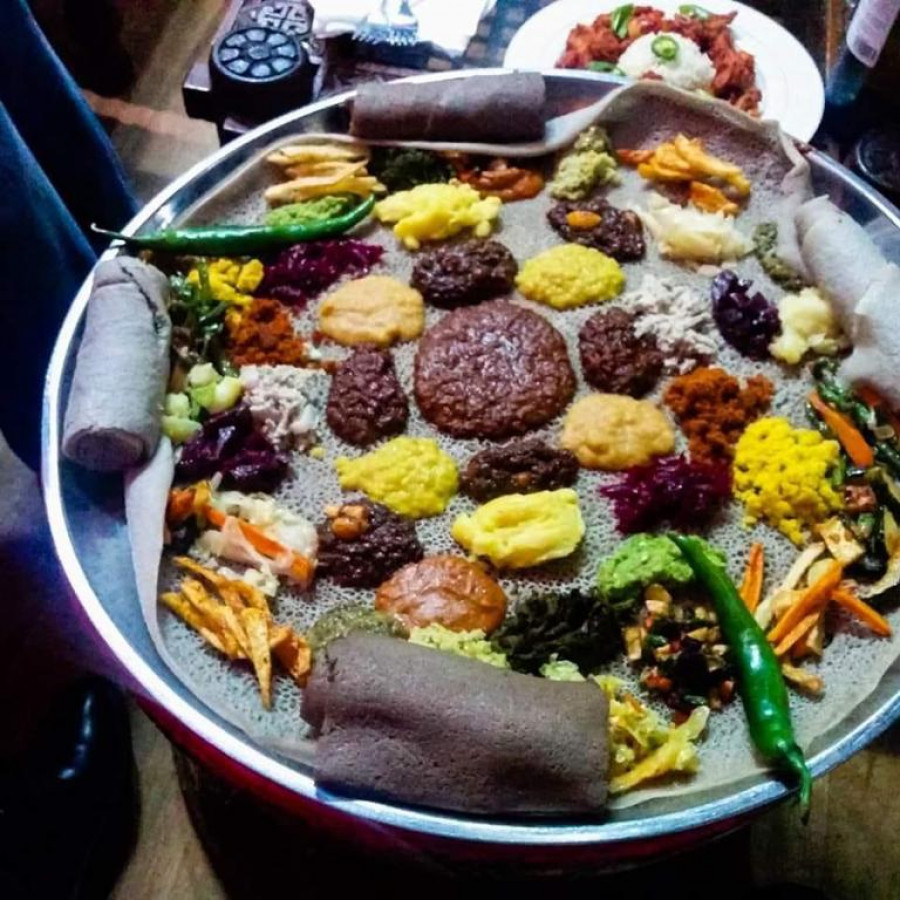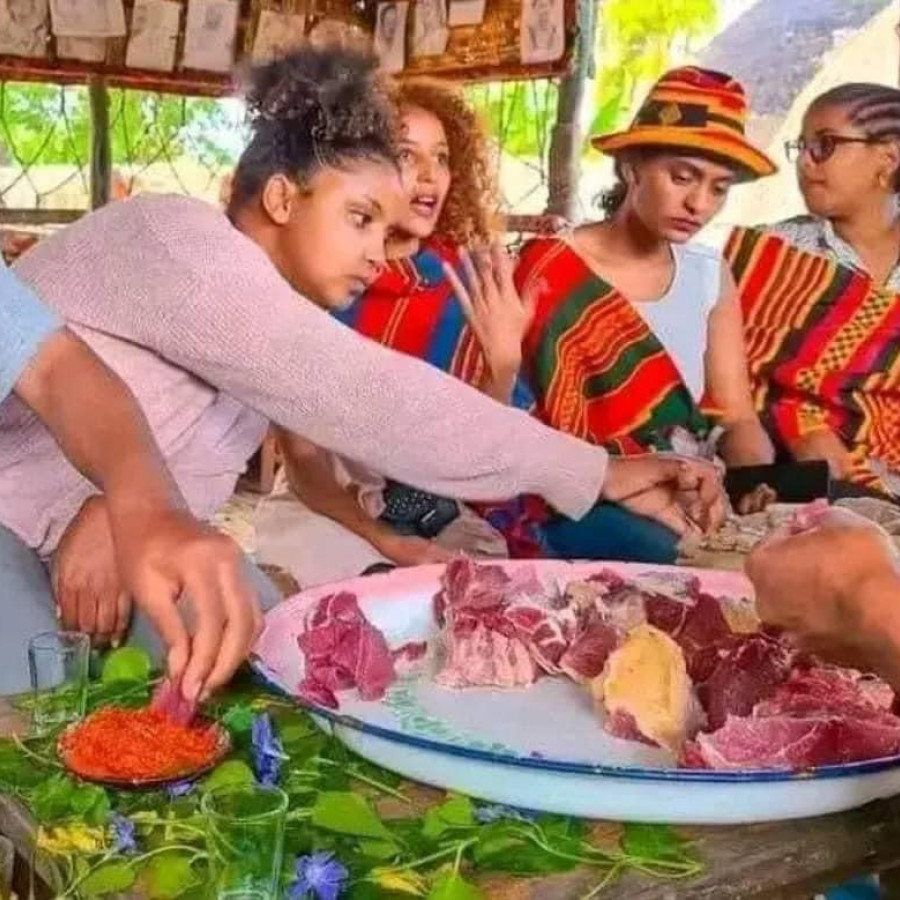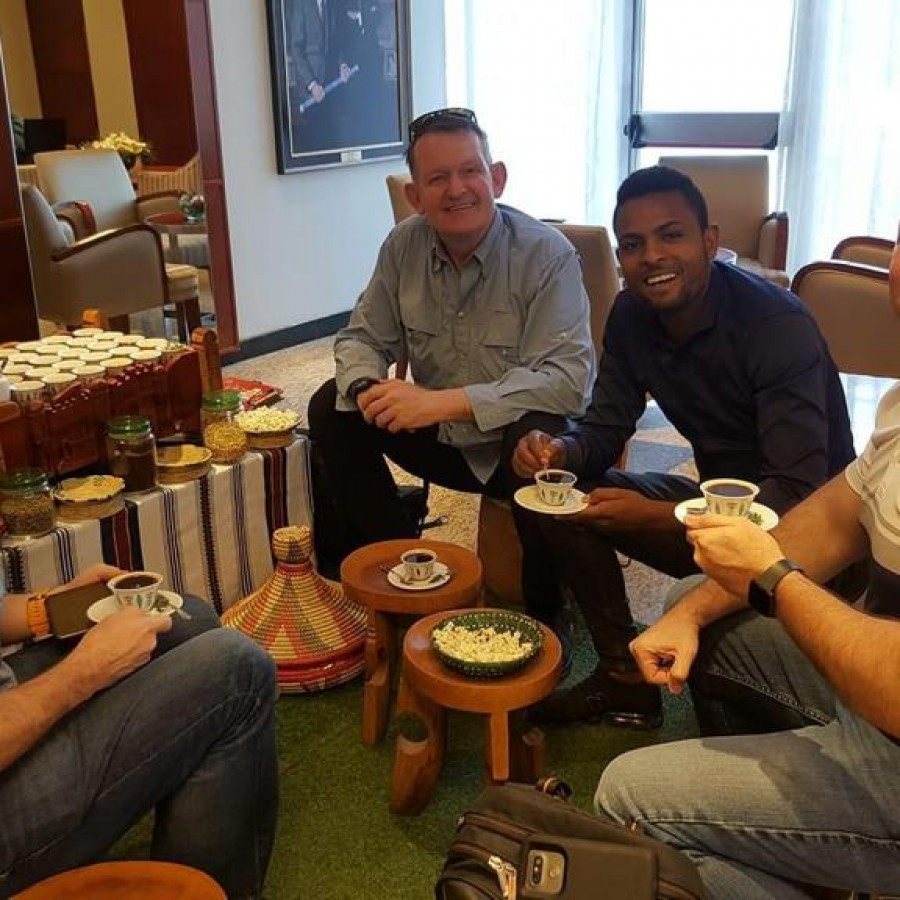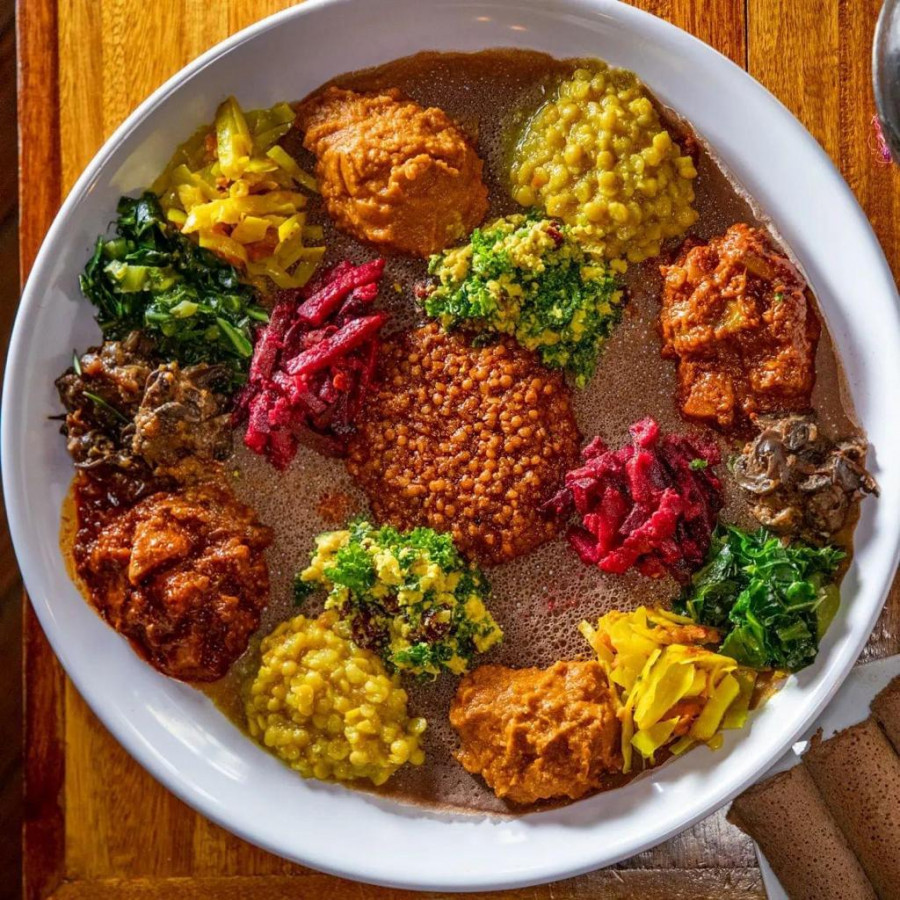Ethiopian Food
Injera & Wot (Wat)
With so many different ethnic groups in Ethiopia, food and drinks also vary greatly. However, two staples throughout the nation are injera and wat.
Injera is a large spongy, pancake-shaped bread, made from tef, a grain mixed with yeast and left to go sour for three days before being cooked on a hot clay board. Injera is served alongside most Ethiopian dishes including a bowl of wat stew.
Wat is a stew or sauce that sometimes contains pieces of meat, beans, vegetables or lentils. It is either seasoned with a blend of berbere (hot pepper powder), onions and garlic to make it red and fiery hot (kai wat), or it can be yellowish in colour and quite bland (alicha wat). Doro wat (chicken) is common.
If you’re a bit concerned about spicy foods, wat misto consists of half portions of kai and alicha wat.
Since Ethiopian Orthodox Christians often refrain from eating meat and animal products, there are nearly always vegetarian options. As a rule, all food in traditional restaurants in Ethiopia is vegetarian on Wednesdays and Fridays. These two days of the week are always fasting days, and fasting means no meat, egg, dairy including butter (though honey is okay). Sometimes fish is eaten on those days.
The most common vegetarian simple dish is shiro, a chickpea or broadbean based paste. A combination vegetarian platter is called yetsom beyaynetu.
In most restaurants you will find delicious dishes that reflect the customs and the ingredients of the region.
In Addis Ababa, visitors will also find a wide range of Chinese, Indian, Yemeni, Lebanese, Italian, French, and Greek food, among others.
Doro wat
Often called the national dish of Ethiopia, the berbere-spiced chicken and egg stew (doro wat) is usually reserved by home cooks for occasions such as family gatherings, religious holidays, and weddings, in part because making it can be very time-consuming.
Raw Meat! Tere Siga
One of Ethiopia’s most popular delicacies is cubes of raw red meat. Two people typically order half a kilo of tere siga to share, which is eaten with injera or bread and dipped in copious amounts of mitmita (red pepper spice blend).
It is said that this dish became popular after it was used as a military tactic during the 16th century in order that fighters could avoid detection by not having to start fires to cook their meat.
The land of coffee
Coffee production in Ethiopia is a longstanding tradition, going back many centuries. Today Ethiopia is the world's fifth largest producer of coffee, and Africa's top producer. Over 4 million small-scale farmers are estimated to produce the nation's coffee, much of it being the arabica species - Coffea arabica (Longberry, Shortberry and Mocha varieties) - which originates in the country. The means of producing coffee remains largely traditional, with nearly all work, cultivating and drying, still done by hand. There are three distinct types of coffee based on their methods of production:
- Forest Coffees, from wild coffee trees grown mostly in the southwest of the country
- Garden Coffees, from trees typically planted around a homestead or other dwelling
- Plantation Coffees, from trees grown intensively on large farms.
Coffee is therefore very important to the economy and culture of Ethiopia.
Half of the coffee produced is consumed by Ethiopians, with the Habesha coffee ceremony being a core cultural custom. It is the daily routine of serving coffee, mainly for the purpose of getting together with relatives, neighbours, or other visitors. If coffee is politely declined, then tea may be served. The ceremony is typically performed by the woman of the household.
Traditionally, loose grass is spread on the floor where the coffee ceremony is held, often decorated with small yellow flowers. The coffee ceremony may also include burning of traditional incense.
Coffee preparation involves first roasting the green coffee beans over an open flame in a pan, before grinding the beans, traditionally using a wooden mortar and pestle. The coffee grounds are then put into a special vessel which contains boiling water and left on an open flame for a couple of minutes until it is well mixed with the hot water. After grinding, the coffee is put through a sieve several times. The host pours the coffee for all participants by moving the tilted boiling pot over a tray with small, handleless cups from a height of around 30cm without stopping until each cup is full.
Some coffee drinkers add sugar, or in the countryside, salt or traditional butter. The beverage is accompanied by a small snack such as popcorn or peanuts or a slightly sweet bread called himbasha / ambasha.






